Blog Short #94: Psychological Barriers to Sticking with Things

Photo by pick-uppath, Courtesy of iStock Photo
Making plans to start something new is easy because you’re excited about it. It’s like a New Year’s resolution: You decide to learn something, lose weight, write that book, declutter your house, or finish a yard project.
You’re gung-ho! Enthusiastic and ready to get started! So you plot it all out. Maybe write it down. You’ve got a plan!
You know what happens next, right? You get started, go along for a while, and then begin to slack off. Your enthusiasm wanes, other things get in the way, and then you let it go.
There’s already a lot written about this subject, and I won’t repeat all the great information out there about creating habits. Instead, what I want to bring to your attention today are the psychological barriers that get in your way. You have to confront these if you’re going to work through your resistance successfully.
I’ve got four of them for you. However, if you have others, email me so I can include them when I write on this subject again. Let’s start.
1. Shiny New Object Syndrome
New and novel ideas are stimulating, as are new projects! The feelings of excitement and hope lift you up and make you feel like you’re moving. You’re on the road to success! The future looks bright!
Planning is even more fun because you feel energized and focused. You’re clear on your intention, and feel good about yourself! You’re on to something.
We all like shiny new objects. The problem, of course, is that they don’t remain shiny or new, and you have to find something more about them to hold your interest.
Think of it like a relationship. You fall in love, you’re walking on air, and life is wonderful. But after about 18 months (or more), you lose that big dopamine rush, settle into the relationship, and become more focused on the work involved in deepening it. It’s good work, but it doesn’t give you that initial rush. It gives you something better if you stick with it and keep working.
Projects and goals are the same. That initial enthusiasm gets you in the door, but sustained effort and work get you the results and the lasting satisfaction that’s infinitely more rewarding.
When you start, you have to know this. It helps to have a way to remind yourself before that first wave of resistance hits you. You have to be ready for it and have a plan to work around it.
Insight #1:
The first round of resistance is an invitation to begin the work that will bring you the satisfaction and success you seek. Appreciate it and use it to move to the next level of your work. See it as an invitation to tighten up your effort and figure out how to reward small steps as you complete them. Success comes from finishing one small task after another.
2. Impatience
Impatience is the cousin of shiny new object syndrome. When the shine wears off and resistance rears its head, impatience screams, “NO! I’ve had enough! I should be there by now.”
You set out on a road trip. You’re excited! You have your favorite music playing, and you’re singing at the top of your lungs. The first hour’s okay. You’re enjoying yourself. Second hour, you’re tiring a little, and the music’s sounding too loud. You try a podcast instead. Third hour, you’re complaining. Fourth hour, you’re like “What possessed me to drive this far? Why didn’t I fly? I want to be there now!”
Impatience is the enemy of success. You either hurry things up and do a sloppy, half-baked job or move on to something else.
Insight #2:
Patience is a virtue! You can hear your parents speaking, yes? Well, they were right. You have to pace yourself with any new endeavor. You have to plan for the third, fourth, and fifth hours of the trip. What strategies can you have in place to make that part of the trip satisfying and sustainable?
3. All-or-Nothing Thinking
This is the one that sinks the project and sends the goal out to sea. All-or-nothing thinking is disguised perfectionism. “If I make one mistake, I have to start over at the beginning.”
People use this one all the time on diets. First, you create a diet that no one can stick to because it’s too strenuous. Next, you eat one thing off your diet and throw in the towel. “I might as well eat whatever I want for the rest of the day because I’ve already ruined it.”
And that goes on the next day and the next day and the next. Going back to the diet seems daunting because you see it as starting at ground zero, and you’ll need to double your efforts and be more punishing to make up for your horrible, deviant behavior.
Perfectionism and its sidekick, all-or-nothing thinking, have no place in successfully completing any goal or project. They’re both poisonous to the process.
Insight #3:
Planning for any goal or project includes planning for mishaps, mistakes, or deviations. Progress is bumpy. Say this mantra to yourself daily. Write it on a poster and put it on the wall where you see it every day. “Progress is bumpy, and that’s okay!” You must get back on the horse no matter how long you were off. You don’t start over. You start from here, right now – two steps up, one back, two steps up, one back. Keep going.
4. Unexpected Problems
With most any worthy project, you’ll encounter unexpected problems or issues you don’t immediately know how to solve. Maybe it’s something you didn’t foresee or something you don’t know how to do.
When you run up against a situation like this, it’s easy to abandon the project. The issue can feel like a boulder you can’t get around. This feeling’s exacerbated by waning enthusiasm, any interruption that gives you an excuse put your project on the back burner, or simply frustration.
Most of us know that worthy goals require us to apply extra effort when problems arise, but we still have that delusional belief – mostly unconscious – that the path should be easy. And when it isn’t, we give up. You’ve got to pull that belief up, stare it down, and dispel it if you want to succeed.
Insight #4:
Sustained effort requires planning for unexpected problems. You need to regroup, pivot to accommodate the new issue, get help from someone who has the information you need, and plan how you’ll reward yourself for working through the problem.
Long-Haul Thinking
Successfully finishing a project or achieving a goal requires a long-haul attitude. That doesn’t mean it has to be grueling. Your approach should be to plan for different parts of the journey, so you remain energized until you finish.
I would suggest you read Atomic Habits by James Clear if you haven’t already to help you set up the strategies to maintain your interest and overcome the obstacles that get in the way. My goal today is to make you aware of the mindset that keeps you from using those strategies.
If you don’t have the correct mindset, all the tricks and tips won’t help you.
That’s all for today!
Have a great week!
All my best,
Barbara








 Atomic Habits is one of the most valuable books I’ve ever read, and I return to it often to remind myself of the steps that lead to creating and instilling new habits permanently. Clear begins with three ideas that run throughout the book:
Atomic Habits is one of the most valuable books I’ve ever read, and I return to it often to remind myself of the steps that lead to creating and instilling new habits permanently. Clear begins with three ideas that run throughout the book: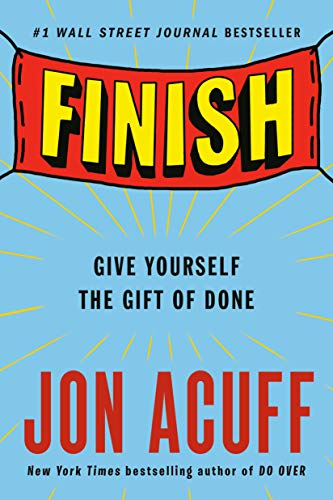 I’m great at starting but not so great at finishing. If that rings a bell for you, you’ll love this book!
I’m great at starting but not so great at finishing. If that rings a bell for you, you’ll love this book!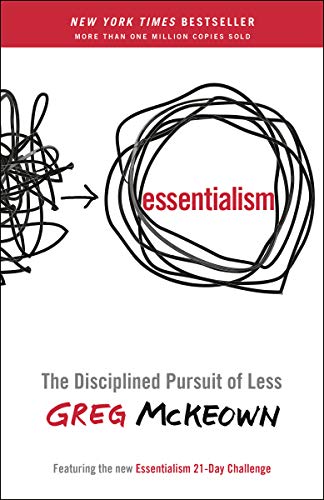 There are some books everyone should read, and this one falls into that category. Greg McKeown presents a complete system and methodology for cleaning out life’s input and narrowing your focus down to what’s essential. He’s the Marie Kondo for decluttering your emotional home.
There are some books everyone should read, and this one falls into that category. Greg McKeown presents a complete system and methodology for cleaning out life’s input and narrowing your focus down to what’s essential. He’s the Marie Kondo for decluttering your emotional home.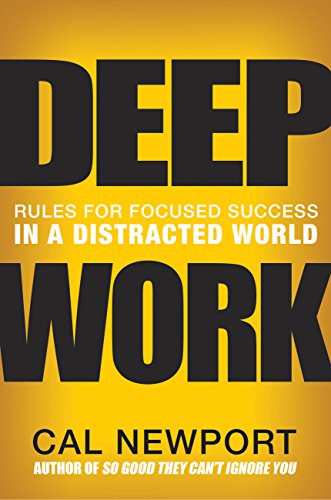 Deep Work is the book to read if you have work that requires intensive brain power and concentration. Newport starts by making a distinction between “deep work” and “shallow work.”
Deep Work is the book to read if you have work that requires intensive brain power and concentration. Newport starts by making a distinction between “deep work” and “shallow work.”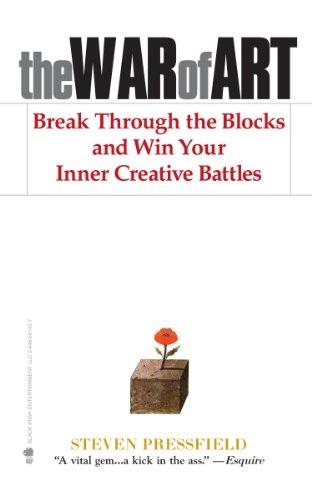 These last two books on my list deal with resistance. The War of Art is one of those must-read books on the list for anyone who is or has tried to pursue a goal requiring sustained, engaged, creative effort.
These last two books on my list deal with resistance. The War of Art is one of those must-read books on the list for anyone who is or has tried to pursue a goal requiring sustained, engaged, creative effort.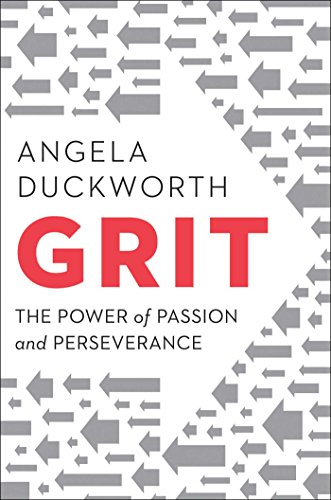 Grit’s been on the New York Times bestseller list forever, and that’s because it’s a textbook for finding and growing passion for work through perseverance and commitment. Duckworth makes an important distinction between talent and grit and focuses on grit as the most necessary ingredient for success in any endeavor.
Grit’s been on the New York Times bestseller list forever, and that’s because it’s a textbook for finding and growing passion for work through perseverance and commitment. Duckworth makes an important distinction between talent and grit and focuses on grit as the most necessary ingredient for success in any endeavor.